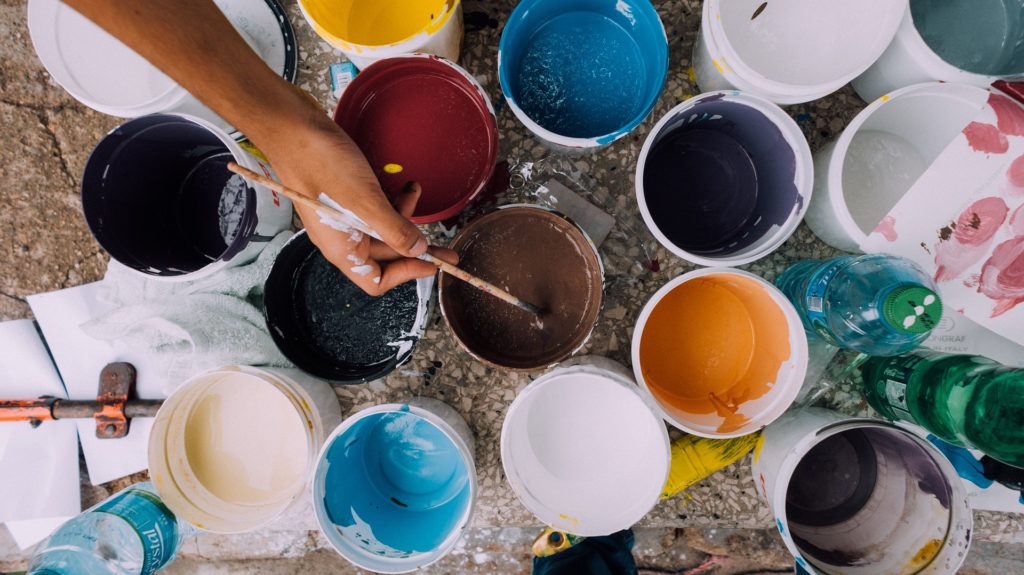- Calls to this hotline are currently being directed to Within Health, Fay or Eating Disorder Solutions
- Representatives are standing by 24/7 to help answer your questions
- All calls are confidential and HIPAA compliant
- There is no obligation or cost to call
- Eating Disorder Hope does not receive any commissions or fees dependent upon which provider you select
- Additional treatment providers are located on our directory or samhsa.gov
“Me and My ED” Backstory Sheds Light on Benefits of Art in Recovery

Christie Begnell of Australia recently released a book of illustrations that is gaining popularity within the global eating disorder community. In “Me and My ED,” Begnell personifies her eating disorder as a monster, using her artwork and clever accompanying text to drive home the intensity and manipulation of eating disorders.
This book is wildly relatable to anyone who has had firsthand experience with eating disorders.
It also starts a larger conversation about mental health, while the story behind its development sheds light on the benefits of art therapy for eating disorder recovery.
Creative Coping Tools in Recovery
When Begnell was triggered throughout her own recovery process, she often turned to drawing as a method of coping. This paved the way for “Me and My ED” and her growing social media presence as both an artist and advocate.
In creating this book, Begnell used her own creative coping tool to reach others who could benefit from her voice and perspective on recovery. This is often true of recovery-inspired art in various forms, whether through drawing, writing, dancing, or any other form of artistic expression.
The arts carry a unique ability to touch both the artist and audience in a profound way that can be especially therapeutic within the mental health community.
Art Therapy for Eating Disorder Treatment
There is little research on art therapy specifically for eating disorder treatment, but it is well known within the community that art and similar experiential therapies can be extremely beneficial.
 A 2006 study [1] found that among the 19 eating disorder treatment centers that participated, 100 percent offered “arts-based therapies” to their clients on a weekly basis. These therapies can support clients as they learn to express themselves and process difficult emotions in treatment, while also encouraging them to develop a long-term coping tool that can be employed well into one’s recovery.
A 2006 study [1] found that among the 19 eating disorder treatment centers that participated, 100 percent offered “arts-based therapies” to their clients on a weekly basis. These therapies can support clients as they learn to express themselves and process difficult emotions in treatment, while also encouraging them to develop a long-term coping tool that can be employed well into one’s recovery.
More research must be conducted on the relationship between arts-based therapies and eating disorder treatment, but it is clear that drawing and the visual arts were effective in Begnell’s recovery. Eating disorders are so destructive in nature that any creation of art in recovery, particularly when it increases awareness and starts a conversation, should be celebrated.
 About the Author: Courtney Howard is the Director of Operations & Business Development at Eating Disorder Hope. She graduated summa cum laude with a B.A. from San Diego State University, holds a paralegal certificate in Family Law, and is a Certified Domestic Violence Advocate. After obtaining her certification as a life coach, Courtney launched Lionheart Eating Disorder Recovery Coaching in 2015 and continues to be a passionate advocate for awareness and recovery.
About the Author: Courtney Howard is the Director of Operations & Business Development at Eating Disorder Hope. She graduated summa cum laude with a B.A. from San Diego State University, holds a paralegal certificate in Family Law, and is a Certified Domestic Violence Advocate. After obtaining her certification as a life coach, Courtney launched Lionheart Eating Disorder Recovery Coaching in 2015 and continues to be a passionate advocate for awareness and recovery.
References:
[1]: Frisch, M.J., Franko, D.L., Herzog, D.B. (2006). Arts-based therapies in the treatment of eating disorders. Eat Disord. 2006 Mar-Apr;14(2):131-42.The opinions and views of our guest contributors are shared to provide a broad perspective of eating disorders. These are not necessarily the views of Eating Disorder Hope, but an effort to offer discussion of various issues by different concerned individuals.
We at Eating Disorder Hope understand that eating disorders result from a combination of environmental and genetic factors. If you or a loved one are suffering from an eating disorder, please know that there is hope for you, and seek immediate professional help.
Reviewed By: Jacquelyn Ekern, MS, LPC on March 15, 2017
Published on EatingDisorderHope.com

The EatingDisorderHope.com editorial team comprises experienced writers, editors, and medical reviewers specializing in eating disorders, treatment, and mental and behavioral health.

